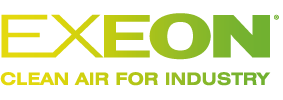Industry Case Studies
Odour Control in the Clinical Waste Handling Industry
Clinical Waste – What You Need To Know
Clinical waste is the name given to waste that may pose a risk of infection, generally produced from healthcare settings and similar activities. To understand clinical waste responsibilities and what you need to know when it comes to odour control in waste facilities, read the below guidance.
What does clinical waste include?
Clinical waste includes swabs, bandages and dressings or medicines that could be hazardous.
Who is responisible for dealing with clinical waste odour control?
Storage and disposal of controlled waste come under the Controlled Waste Regulations 1992. it is essential that everyone responsible for dealing with clinical waste fully understands their responsibilities.
What does this mean for the producers of clinical waste?
All producers of clinical waste are responsible for ensuring that it is stored and disposed of correctly. It is essential to ensure that odour and pollution are controlled during storage, transfer and disposal. Odours may not be dangerous to physical health. However, they are considered psychological nuisances, which are essential to overcome by installing suitable odour and emission control systems in clinical waste areas.
Odour control methods
Various methods are available to reduce and control odour and emissions used in clinical waste settings.
What are common odour control absorbents used for waste facilities?
Absorbing is an odour masking technique. Common odour control absorbents include silica gel and activated carbon dry scrubbers to absorb target gases and trap them on the surface of porous solid adsorbent material. This differs from absorbent methods such as wet scrubbers that use water or acid wash to remove odorous liquid substances. In some cases, a biofilter installation could be suitable.
Can you mix absorbents together for clinical waste?
This depends on the absorbents. It would be wise to get advice before attempting to mix absorbents.
What is the most straightforward technique to remove odours?
The most straightforward technique is usually the relatively passive absorption units, which can be used in combination with other methods where facilities require it. It is possible to use multiple odour control techniques, including odour masking and odour control.
How does odour masking work for clinical waste?
Odour masking introduces a more powerful odour to reduce the smells caused by the waste and mask it with a more pleasant, highly concentrated masking agent, which the human nose picks up instead of the intense or foul-smelling clinical waste. Masking will not remove the odour, but it will make the area smell more pleasant. Odour masking requires expertise to understand the most effective odour controls. The masking agent will not change the chemical composition; it will only introduce a new smell. Odour masking products in the industrial sectors can include sprayers and misters.
Odour control
Odour control will reduce the concentration of the chemicals within the waste causing the smells. In various forms, activated carbon (activated charcoal) uses carbon filtration media to remove odours and airborne chemicals. Adsorption techniques trap the target gasses by passing the gas through the silica gel or activated carbon units which contain the smell on the surface of the porous material. This is a standard method of odour control used within medical and clinical waste facilities. They are simple to install and can combine readily with other techniques.
Clinical waste should be segregated from other types of waste and removed from the premises by suitably licensed carriers according to hazard risk assessment. Clinical waste producers have a duty of care to protect individuals that come into contact with clinical waste, not just from contact but from the sensory damage and unpleasant surrounding that odours cause. Working with ventilation and odour control experts to manage clinical waste is essential to ensure that you provide an environment safe for workers and site visitors and meet regulatory requirements.
If you’re unsure as to whether ventilation, absorbents or masking techniques are appropriate for the waste you’re dealing with, please contact us. We would be happy to find an appropriate solution to fit your needs.
